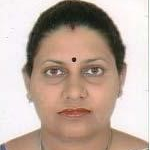
Pragya Varshney
Work place: Division of ICE, Netaji Subhas Institute of Technology, New Delhi, India
E-mail: pragya.varshney1@gmail.com
Website:
Research Interests: Interaction Design, Processor Design, Algorithm Design
Biography
Pragya Varshney is Associate Professor in Division of Instrumentation and Control Engineering, Netaji Subhas Institute of Technology, New Delhi, India. She received B. E. degree in Electrical Engineering from University of Roorkee, M.E. degree in Control & Instrumentation and Ph. D. degree from University of Delhi, Delhi, India. Her major fields of interest include Analog mixed mode design and Signal Processing.
Dr. Varshney is a member of IEEE (Institute of Electrical and Electronics Engineers) since 2005.
Author Articles
Implementation of Carlson based Fractional Differentiators in Control of Fractional Order Plants
By Nitisha Shrivastava Pragya Varshney
DOI: https://doi.org/10.5815/ijisa.2018.09.08, Pub. Date: 8 Sep. 2018
This paper presents reduced integer order models of fractional differentiators. A two step procedure is followed. Using the Carlson method of approximation, approximated second iteration models of fractional differentiators are obtained. This method yields transfer function of high orders, which increase the complexity of the system and pose difficulty in realization. Hence, three reduction techniques, Balanced Truncation method, Matched DC gain method and Pade Approximation method are applied and reduced order models developed. With these models, fractional Proportional-Derivative and fractional Proportional-Integral-Derivative controllers are implemented on a fractional order plant and closed loop responses obtained. The authors have tried to reflect that the Carlson method in combination with reduction techniques can be used for development of good lower order models of fractional differentiators. The frequency responses of the models obtained using the different reduction techniques are compared with the original model and with each other. Three illustrative examples have been considered and their performance compared with existing systems.
[...] Read more.Other Articles
Subscribe to receive issue release notifications and newsletters from MECS Press journals